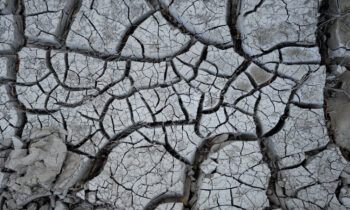Drought Conditions Across Texas Worsen

High temperatures and drought conditions have persisted throughout the summer months in Texas, with little rain to provide relief.
While tropical storm Harold brought some relief along the coast of Texas, according to the Texas state climatologist, much of the state has witnessed above average temperatures — 4 to 8 degrees above normal and in the triple digits.
“The coast of Texas and the West Texas mountains were able to find temperature relief from recent rainfall, but most of the state has experienced triple degree weather with no relief expected in the near future,” said Dr. John Nielsen-Gammon, State Climatologist and Regents Professor of Atmospheric Sciences at the Texas A&M University College of Arts and Sciences.
U.S. Drought Monitor
The Texas drought monitor map, produced by the National Drought Mitigation Center at the University of Nebraska, showed increased drought conditions during the last three months and the previous year overall. The Drought Severity and Coverage Index, DSCI, ranges from 0-500 and calculates cumulative drought data for an area, with zero meaning none of the area is abnormally dry or in drought and 500 indicating all of the area is in exceptional drought.
Nielsen-Gammon said current drought conditions are very similar to the summer of 2022.
“The only difference between the 2022 and 2023 droughts is that the 2022 drought ended when rainfall started the second week of August,” Nielsen-Gammon said.
To explain his comparisons, the most recent DSCI calculated on Aug. 29 was 281 compared to a DSCI of 251 the same time last year.
Future Predictions
On Aug. 31, the Climate Prediction Center released the U.S. Seasonal Drought Outlook, demonstrating how the drought will continue from Sept. 1-Nov. 30.
During a typical year, September and October are relatively wet months for Texas; but since rain has been sporadic, September is expected to lack rainfall. The remaining three months of this year have rainfall chances edging toward the west side of Texas as the El Niño progresses.
El Niño occurs when warmer-than-average temperatures in the tropical Pacific affect weather patterns around the globe. This leads to a cooler and wetter winter season in Texas from late fall to mid-spring.
“The El Niño conditions have been in place in the tropics and are expected to persist in the winter,” Nielsen-Gammon said.
Although El Niño typically produces cooler and wetter winters, the outlook of this year’s winter temperatures is normal since El Niño is competing with climate change, and there isn’t a pull of cold air ready to plunge from the northern border.
“The El Niño typically doesn’t produce extreme cold outbreaks because the northern border tends to be warmer during this,” Nielsen-Gammon said. “There isn’t much rain in the forecast for the foreseeable future; hopefully, we will see extreme rainfall as El Nino approaches.”
This article by Randi Williams originally appeared on AgriLife Today.





